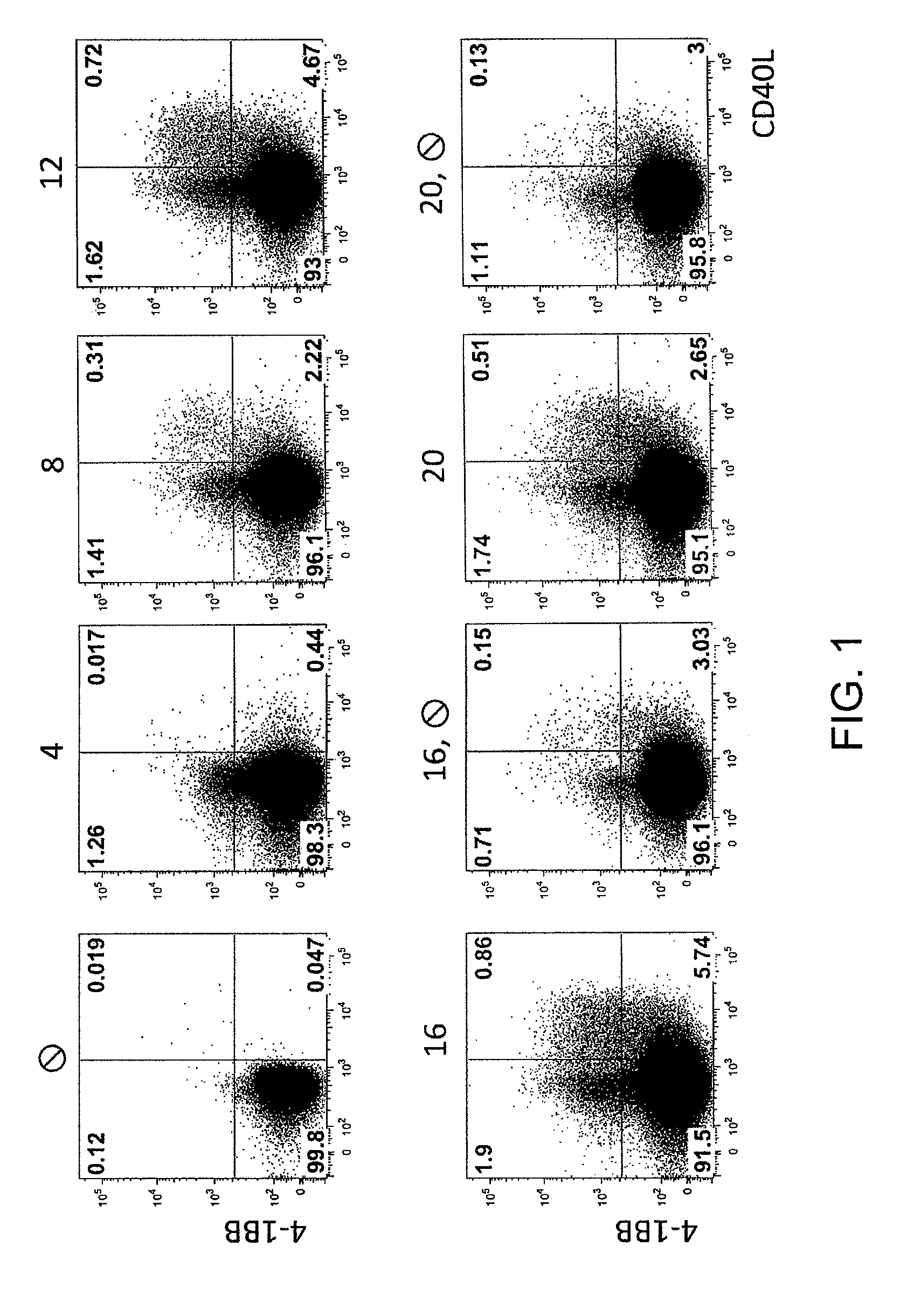Method for the identification and separation of non-regulatory T-cells from a mixture of regulatory T-cells
a technology of regulatory t-cells and non-regulatory t-cells, applied in the field of immunology, can solve the problems of not being able to identify and isolate treg cells, allergies also represent unwanted immune responses, and cd25 cannot be used specifically for identifying and separating activated antigen specific regulatory t-cells
- Summary
- Abstract
- Description
- Claims
- Application Information
AI Technical Summary
Benefits of technology
Problems solved by technology
Method used
Image
Examples
example 1
[0108]FIG. 1: Shortly after stimulation, a large fraction of the CD137+ Treg also expressed CD154. Peripheral Th-cells (A) were isolated using FACS or MACS from PBMC and were cultivated with allogeneic monocyte-derived dendritic cells (moDC) for 0 to 20 hours. At the time points indicated, the expression of CD137 versus CD154 was determined using flow-cytometry. After 8 hours, already 20% of the CD137+ T-cells also expressed CD154. After 16 hours, at which the maximum CD137 expression is detected, 30% of the cells are also positive for CD154. This shows that, contaminating T-cells are already present at early time points, but that the maximum number of target cells expresses a marker only after 16 hours. The contaminating cells can be depleted by the method of the invention.
example 2
[0109]FIG. 2: Within the CD137+ T-cells mixture, CD154− T-cells isolated according to the method of the invention express more FoxP3.
[0110]FIG. 2(A) Peripheral Th-cells were isolated from PBMC using FACS or MACS and / or cultivated for 16 hours with allogeneic monocyte-derived dendritic cells (moDC). The expression of CD137 versus CD154 was determined using flow-cytometry. Using FACS sorting, CD137+ cells were separated into CD154 positive and negative cells and were stained intercellular against FoxP3. 80% of the FoxP3 positive cells are part of the CD137+CD154− fraction, whereas the CD137+CD154+ fraction consists to 90% of FoxP3− conventional T-cells.
[0111]FIG. 2 (B) Alternatively, Treg was isolated using the “MACS Treg isolation Kit” and was stimulated polyclonally with MACSiBeads loaded with CD3 / CD28 for 6 hours. Subsequently, CD137 and CD154 as well as the expression of FoxP3 was determined and correlated to each other. Even after polyclonal stimulation, the CD137+ CD154− Treg co...
example 3
[0112]FIG. 3: Within the CD137+ T-cell mixture, only CD154+ T-cells express effector cytokines. T-cells expressing effector cytokines are undesirable and can be depleted with the method of the invention. Peripheral Th-cells were isolated using FACS or MACS and were cultivated for 16 hours with allogeneic monocyte-derived dendritic cells (moDC). The expression of CD137 versus CD154 was determined using flow-cytometry. Using FACS, CD137+ was separated into CD154 positive and negative cells and were stained intracellularly against IFN-gamma.
PUM
| Property | Measurement | Unit |
|---|---|---|
| time | aaaaa | aaaaa |
| time | aaaaa | aaaaa |
| time | aaaaa | aaaaa |
Abstract
Description
Claims
Application Information
 Login to View More
Login to View More - R&D
- Intellectual Property
- Life Sciences
- Materials
- Tech Scout
- Unparalleled Data Quality
- Higher Quality Content
- 60% Fewer Hallucinations
Browse by: Latest US Patents, China's latest patents, Technical Efficacy Thesaurus, Application Domain, Technology Topic, Popular Technical Reports.
© 2025 PatSnap. All rights reserved.Legal|Privacy policy|Modern Slavery Act Transparency Statement|Sitemap|About US| Contact US: help@patsnap.com



